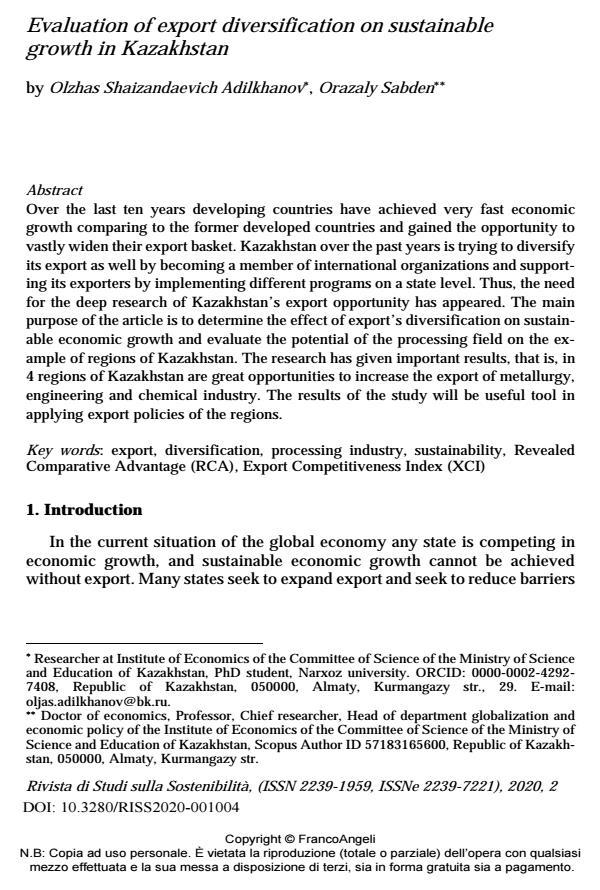Evaluation of export diversification on sustainable growth in Kazakhstan
Titolo Rivista RIVISTA DI STUDI SULLA SOSTENIBILITA'
Autori/Curatori Olzhas Shaizandaevich Adilkhanov, Orazaly Sabden
Anno di pubblicazione 2021 Fascicolo 2020/2
Lingua Inglese Numero pagine 15 P. 49-63 Dimensione file 166 KB
DOI 10.3280/RISS2020-002004
Il DOI è il codice a barre della proprietà intellettuale: per saperne di più
clicca qui
Qui sotto puoi vedere in anteprima la prima pagina di questo articolo.
Se questo articolo ti interessa, lo puoi acquistare (e scaricare in formato pdf) seguendo le facili indicazioni per acquistare il download credit. Acquista Download Credits per scaricare questo Articolo in formato PDF

FrancoAngeli è membro della Publishers International Linking Association, Inc (PILA)associazione indipendente e non profit per facilitare (attraverso i servizi tecnologici implementati da CrossRef.org) l’accesso degli studiosi ai contenuti digitali nelle pubblicazioni professionali e scientifiche
Over the last ten years developing countries have achieved very fast economic growth comparing to the former developed countries and gained the opportunity to vastly widen their export basket. Kazakhstan over the past years is trying to diversify its export as well by becoming a member of international organizations and supporting its exporters by implementing different programs on a state level. Thus, the need for the deep research of Kazakhstan’s export opportunity has appeared. The main purpose of the article is to determine the effect of export’s diversification on sustainable economic growth and evaluate the potential of the processing field on the example of regions of Kazakhstan. The research has given important results, that is, in 4 regions of Kazakhstan are great opportunities to increase the export of metallurgy, engineering and chemical industry. The results of the study will be useful tool in applying export policies of the regions.
Parole chiave:Export, diversification, processing industry, sustainability, Revealed Comparative Advantage (RCA), Export Competitiveness Index (XCI)
- Formation of highly intelligent capital at the expense of government spending: Economic effect for Kazakhstan Dana Kangalakova, Olzhas Adilkhanov, Dinara Mukhiyayeva, Sharbanu Turdalina, Zaira Satpayeva, in Knowledge and Performance Management /2025 pp.54
DOI: 10.21511/kpm.09(2).2025.05
Olzhas Shaizandaevich Adilkhanov, Orazaly Sabden, Evaluation of export diversification on sustainable growth in Kazakhstan in "RIVISTA DI STUDI SULLA SOSTENIBILITA'" 2/2020, pp 49-63, DOI: 10.3280/RISS2020-002004